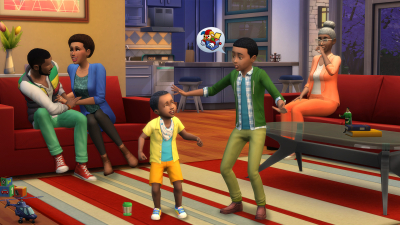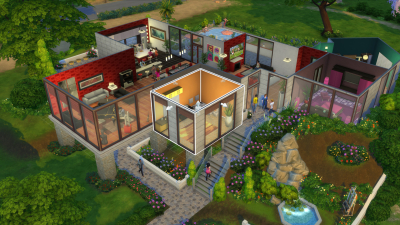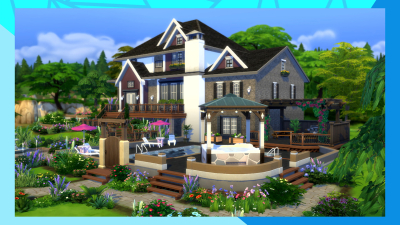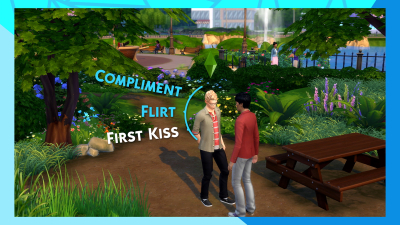The Sims™ 4
As I ventured into the life of Jess, a digital inhabitant with a flair for programming and a bustling social calendar, within the vibrant yet virtual world of The Sims™ 4, my journey was a mix of creativity and constraint. This installment of the iconic life simulation series offers players the chance to design life's every detail, from the mundane to the magical. Guiding Jess through her digital milestones, I encountered innovations and limitations that shaped my overall experience in this simulated world.
Revolutionizing Customization
The game remarkably offers unparalleled levels of character customization. The addition of emotional depth enriches the gameplay, introducing a dimension of realism as Sims experience a comprehensive spectrum of emotions, influencing their decisions and social interactions. Watching Jess's emotional landscape shift from the thrill of a budding romance to the pride of career advancement added a compelling layer to the game that was both immersive and intriguing.
Exploration Versus Segmentation
While the game excels in personalizing Sims and infusing them with emotional complexity, the scope of its world is somewhat restricted. Moving from the open-world concept of The Sims™ 3 to the compartmentalized neighborhoods in The Sims™ 4, marked by loading screens, felt like a regression. The limited variety of social settings and a thin roster of non-playable characters contribute to a world that occasionally feels less dynamic and authentic. The omission of elements such as vehicles, toddlers, and swimming pools also diminishes the game's immersive potential.
Creative Construction Unleashed
Conversely, the game's Build Mode is a triumph, offering unparalleled flexibility and simplicity in home design. The ability to effortlessly control entire rooms and alter walls makes the architectural features of the game user-friendly for players, regardless of their background in design. Coupled with enhanced multitasking functionality, this feature ensures a gameplay experience that is both fluid and gratifying.
The Emotional Spectrum of The Sims™ 4
The nuanced emotional system is the game's crowning feature. It infuses Sims with a level of complexity and authenticity that closely mirrors the human experience. Engaging with Jess's emotional highs and lows offered an insightful glimpse into the possibilities of virtual existence, characterized by moments of happiness, sadness, and everything in between.
Reflecting on the Simulation of Digital Life
Moving from The Sims™ 3 to The Sims™ 4 represents a series of compromises. While the game shines in the areas of character customization and emotional richness, it stumbles in world development and feature breadth. Nonetheless, the groundwork established by The Sims™ 4 suggests the potential for a more developed and immersive experience in potential future expansions. At present, it serves as an engaging, though imperfect, entry in the Sims narrative.
Advantages:
- Unmatched character customization abilities
- Emotional depth enriches the complexity of Sims' experiences
- Revitalized Build Mode fosters creativity and user-friendly design
- Improved multitasking for a more seamless gameplay experience
Disadvantages:
- Restricted exploration and prevalent loading screens
- Notable absence of features like vehicles, toddlers, and swimming pools
- Limited social locales and a sparse assortment of non-playable characters
To download the app, you will get links to the Official Website and/or official digital markets.





Latest Reviews
Latest Articles
- Sonic Racing: CrossWorlds – A Race Through Discounts, Dynamics, and Crossover Adventures Sonic Racing: CrossWorlds finds itself at the center of a vibrant promotion that not only brings fans value through pricing adjustments but also offers a... Grace Hall Dec 08, 2025 Read more
- Retro Grid Unleashed: The Pixelated Odyssey The forthcoming pixelated adventure offers an imaginative mix of retrofuturism and visionary storytelling. Its unique style recalls classic 1980s science fiction, blending a distinctive visual... Daniel Garcia Dec 08, 2025 Read more
- A Bold New Vision: Live-Action Meets Animation in November 2028 This update delves into the upcoming live-action adaptation centered on a famous franchise. The production promises a unique approach by combining live-action with animation elements,... Daniel Garcia Dec 08, 2025 Read more
- Game-Changing 27-Inch Monitor: Premium Performance at an Unbeatable Price The current wave of gaming technology constantly brings enticing opportunities for enthusiasts searching for high-quality gear at a remarkable price. Recently, a striking deal on... Grace Hall Nov 22, 2025 Read more





















